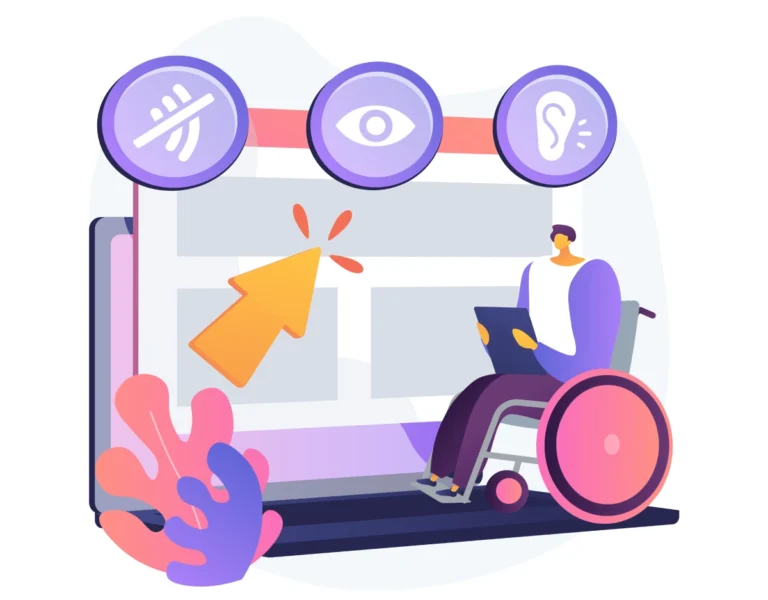The dark mode versus light mode debate has transcended simple aesthetic preference to become a crucial consideration in modern UI/UX design strategy. As businesses invest heavily in digital experiences, understanding how color palette choices impact user behavior, brand perception, and overall engagement has become essential for successful branding and user interface optimization.
What began as a niche feature for developers and night-shift workers has evolved into a mainstream expectation that influences everything from typography readability to brand identity consistency. Smart businesses recognize that offering both dark and light mode options isn’t just about following trends – it’s about creating flexible UI/UX design systems that serve diverse user preferences while maintaining strong branding across all visual contexts.
The implications of mode selection extend far beyond visual appeal, affecting everything from user retention and accessibility to battery life and eye strain. For businesses serious about optimizing their digital presence, mastering both dark and light mode implementations in UI/UX design has become a competitive necessity that directly impacts user satisfaction and business outcomes.
Understanding User Psychology in Dark vs. Light Mode UI/UX Design
1. Psychological Impact of Color Palette Choices
Different lighting modes trigger distinct psychological responses that influence user behavior, engagement patterns, and brand perception. Strategic UI/UX design leverages these psychological factors to enhance user experience while reinforcing branding objectives through thoughtful color palette implementation.
Psychological effects in UI/UX design:
- Dark modes often convey sophistication, premium quality, and modern branding aesthetics
- Light modes suggest accessibility, clarity, and traditional trustworthy branding approaches
- Color palette psychology varies significantly across cultural and demographic segments
- Typography readability changes dramatically between dark and light backgrounds in UI/UX design
Example: A luxury e-commerce brand implemented dark mode as their default UI/UX design, resulting in 23% longer browsing sessions and 18% higher conversion rates for premium products, while their light mode option maintained higher accessibility scores for broader audience branding.
2. User Preference Patterns and Demographics
Understanding who prefers which mode helps inform UI/UX design decisions and branding strategies that align with target audience expectations while optimizing user experience across different demographic segments.
Demographic insights for UI/UX design:
- Younger users (18-34) show 67% preference for dark mode in digital branding experiences
- Professional environments often favor light mode for better typography readability
- Gaming and entertainment industries see overwhelming dark mode preference in UI/UX design
- Accessibility needs vary significantly based on visual conditions and color palette sensitivity
3. Context-Dependent Mode Preferences
Users don’t just prefer one mode universally – their preferences shift based on environment, time of day, and task type. Effective UI/UX design accommodates these contextual variations while maintaining consistent branding across all modes.
Contextual factors influencing UI/UX design choices:
- Time-based preferences (dark mode for evening, light for daytime use)
- Environment lighting conditions affecting color palette perception
- Task-specific needs (reading vs. entertainment in UI/UX design contexts)
- Device type and screen technology impacting branding display quality
Technical Considerations for Dual-Mode UI/UX Design
1. Color Palette Architecture for Flexible Branding
Creating effective dual-mode experiences requires sophisticated color palette systems that maintain brand identity while optimizing readability and visual hierarchy across both light and dark implementations.
Advanced color palette strategies in UI/UX design:
- Semantic color naming systems that adapt automatically to mode changes
- Contrast ratio optimization for accessibility across both branding contexts
- Brand color adaptation techniques that preserve identity in different modes
- Typography color coordination that maintains readability standards
Implementation best practices for UI/UX design:
- Establish primary, secondary, and accent colors for both modes in branding systems
- Create neutral color scales that work across light and dark backgrounds
- Design hover states and interactive elements for consistent UI/UX design feedback
- Test color palette choices across different devices and screen technologies
2. Typography Optimization Across Modes
Typography readability changes significantly between dark and light modes, requiring careful consideration of font weights, sizes, and spacing to maintain optimal reading experiences in both UI/UX design contexts.
Typography considerations for dual-mode branding:
- Font weight adjustments between modes (lighter weights for dark backgrounds)
- Letter spacing optimization for different color palette backgrounds
- Line height modifications to improve readability in varying UI/UX design contexts
- Hierarchy adjustments that work effectively across both branding modes
Example: A news website optimized their typography for both modes, using slightly heavier font weights in dark mode and adjusting their color palette accordingly, resulting in 31% longer reading sessions and 40% lower bounce rates across both UI/UX design implementations.
3. Image and Media Adaptation
Visual content must adapt seamlessly between modes to maintain consistent branding and optimal user experience. This requires strategic planning in UI/UX design for photography, illustrations, and graphical elements.
Media optimization for dual-mode UI/UX design:
- Photography treatment that works across different color palette backgrounds
- Logo variations designed specifically for each branding context
- Icon systems that maintain visibility and meaning in both modes
- Illustration styles that complement rather than clash with mode-specific typography
Business Impact of Mode Selection in UI/UX Design
1. Conversion Rate Optimization Through Strategic Mode Implementation
Different modes can significantly impact conversion rates depending on industry, target audience, and specific business objectives. Strategic UI/UX design considers these factors when implementing dual-mode experiences.
Conversion factors influenced by UI/UX design mode selection:
- Trust signals vary between dark and light branding implementations
- Call-to-action visibility changes with color palette and background combinations
- Form completion rates differ based on typography readability and contrast
- Purchase decision psychology shifts with overall branding aesthetic presentation
2. Brand Differentiation Through Mode Strategy
Smart businesses use mode implementation as a branding differentiator, creating memorable user experiences that align with brand personality while optimizing UI/UX design for their specific market positioning.
Branding opportunities in dual-mode UI/UX design:
- Premium positioning through sophisticated dark mode branding implementations
- Accessibility leadership by offering comprehensive light mode typography options
- Innovation signaling through cutting-edge color palette and design choices
- Market positioning alignment with mode preferences of target demographics
Example: A fintech startup gained competitive advantage by offering the industry’s most polished dark mode UI/UX design, attracting tech-savvy millennials and achieving 45% faster user adoption compared to competitors with traditional light-only branding.
3. User Retention and Engagement Metrics
Mode availability and implementation quality directly impact user satisfaction, session duration, and long-term platform loyalty through enhanced UI/UX design experiences.
Retention benefits of effective dual-mode branding:
- Increased daily active users through personalized experience options
- Higher user satisfaction scores from accommodating visual preferences
- Improved accessibility leading to broader market reach through inclusive UI/UX design
- Enhanced brand loyalty from users who appreciate thoughtful design consideration
Design System Best Practices for Dual-Mode Implementation
1. Component-Level Mode Adaptation
Successful dual-mode UI/UX design requires systematic component design that maintains functionality while adapting visual presentation for different color palette contexts and branding requirements.
Component design strategies for UI/UX design:
- Button states that work effectively across both branding modes
- Navigation elements with consistent hierarchy regardless of color palette
- Card designs that maintain information architecture in different contexts
- Modal and overlay treatments that preserve usability across typography variations
2. Animation and Micro-Interaction Considerations
Motion design must account for different visual contexts, ensuring animations remain visible and effective regardless of mode selection in comprehensive UI/UX design systems.
Animation optimization for dual-mode branding:
- Transition effects that work across different color palette backgrounds
- Loading animations visible in both light and dark UI/UX design contexts
- Hover states that provide clear feedback regardless of branding mode
- Focus indicators that maintain accessibility standards across typography variations
3. Testing and Quality Assurance
Comprehensive testing ensures both modes deliver equivalent user experiences while maintaining brand consistency and optimal functionality across all UI/UX design implementations.
Testing protocols for dual-mode UI/UX design:
- Cross-browser compatibility testing for both branding modes
- Accessibility auditing across different color palette implementations
- Performance testing to ensure equal loading speeds in both contexts
- User testing with diverse demographics to validate typography and design choices
Industry-Specific Mode Strategy Considerations
1. E-commerce and Retail UI/UX Design
Online retail environments must balance product presentation with user comfort, making mode selection crucial for optimizing shopping experiences through strategic branding and color palette choices.
E-commerce considerations for UI/UX design:
- Product photography that translates across different branding contexts
- Shopping cart and checkout processes optimized for both modes
- Review and rating systems with consistent typography readability
- Search and filtering interfaces that maintain usability across color palette variations
2. SaaS and Productivity Platform Branding
Software platforms require mode implementations that support extended use sessions while maintaining professional branding aesthetics and optimal typography for data-heavy interfaces.
SaaS optimization strategies in UI/UX design:
- Dashboard designs that work effectively in both branding modes
- Data visualization that remains clear across different color palette backgrounds
- Form-heavy interfaces with consistent typography and input field visibility
- Navigation systems that maintain hierarchy regardless of mode selection
3. Content and Media Platform Design
Content platforms must prioritize readability and extended engagement, making mode selection particularly important for typography optimization and overall user experience in UI/UX design.
Content platform considerations for branding:
- Article reading experiences optimized for both modes through typography choices
- Video player interfaces that work across different color palette backgrounds
- Comment systems with consistent readability and engagement features
- Content discovery interfaces that maintain visual hierarchy in both UI/UX design contexts
Future Trends in Mode-Aware UI/UX Design
1. Adaptive Intelligence in Branding Systems
Emerging technologies enable automatic mode selection based on user context, environmental factors, and behavioral patterns, creating more intelligent UI/UX design systems that enhance personalization.
Intelligent adaptation features in UI/UX design:
- Time-based automatic switching aligned with user preferences and branding consistency
- Environmental light detection for optimal color palette selection
- User behavior analysis informing personalized mode recommendations
- Cross-device synchronization maintaining consistent typography and design preferences
2. Advanced Customization Options
Future UI/UX design systems will offer granular customization beyond simple dark/light modes, allowing users to fine-tune color palette, typography, and branding elements for truly personalized experiences.
Customization trends in UI/UX design:
- Accent color selection within established branding guidelines
- Typography size and weight preferences for improved accessibility
- Contrast level adjustments for individual visual needs
- Seasonal and themed variations that maintain brand consistency
Final Thought
The dark mode versus light mode decision represents more than a simple design preference – it’s a strategic business choice that impacts user engagement, brand perception, and competitive positioning. Successful UI/UX design in 2025 requires thoughtful implementation of both modes, creating flexible systems that serve diverse user needs while maintaining strong branding consistency.
Businesses that master dual-mode implementation don’t just follow trends – they create competitive advantages through superior user experience and inclusive design. The investment in comprehensive color palette systems, optimized typography, and thoughtful branding across both modes pays dividends through improved user satisfaction, higher retention rates, and stronger market differentiation.
Whether your business prioritizes accessibility, premium positioning, or broad market appeal, strategic mode implementation in UI/UX design creates opportunities to better serve your audience while strengthening your brand identity. The future belongs to businesses that recognize mode selection as a powerful tool for user engagement rather than a simple aesthetic choice.
Ready to optimize your digital presence with strategic dual-mode UI/UX design that enhances user experience while strengthening your branding? Our expert design team specializes in creating sophisticated color palette systems and typography optimization that work beautifully across both dark and light modes. Book a free consultation call today to discover how thoughtful mode implementation can improve user engagement and conversion rates, or explore our comprehensive digital marketing services including web development, SEO, social media management, and complete branding solutions to create a unified, user-friendly online presence.





